
Where We Be
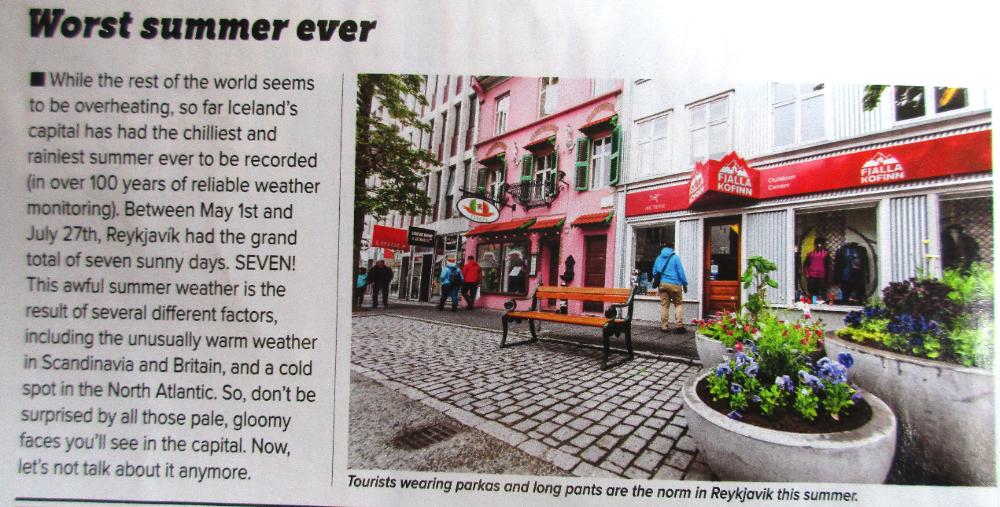
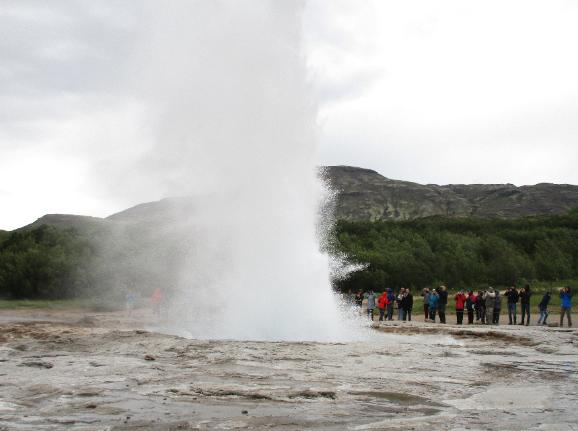
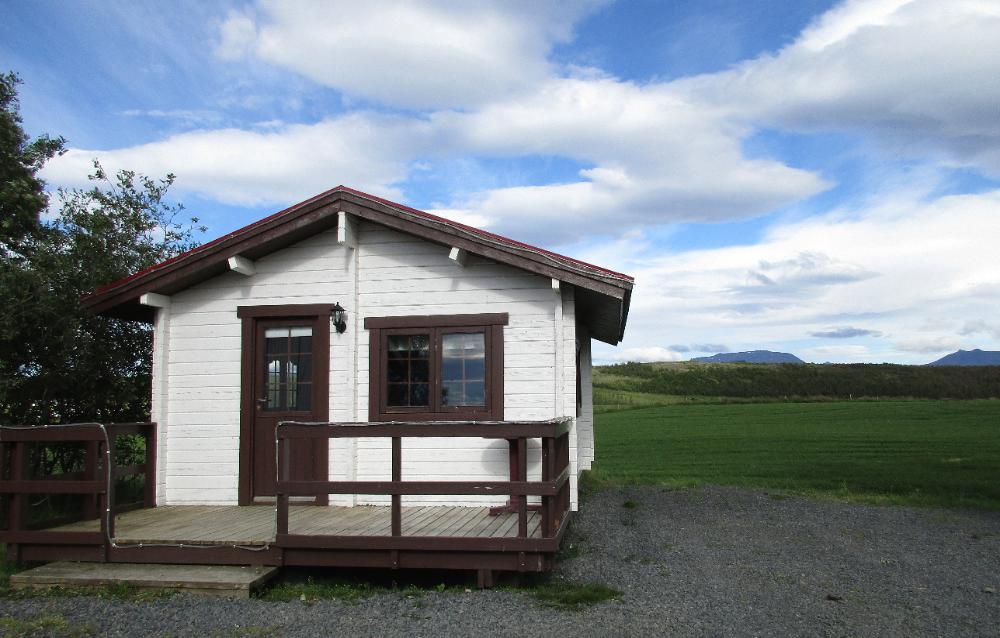
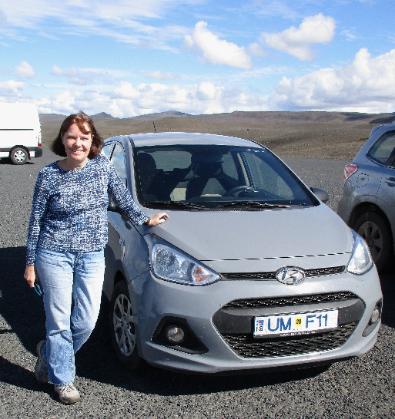
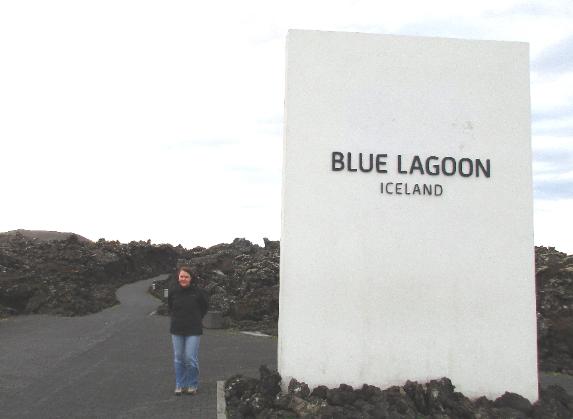
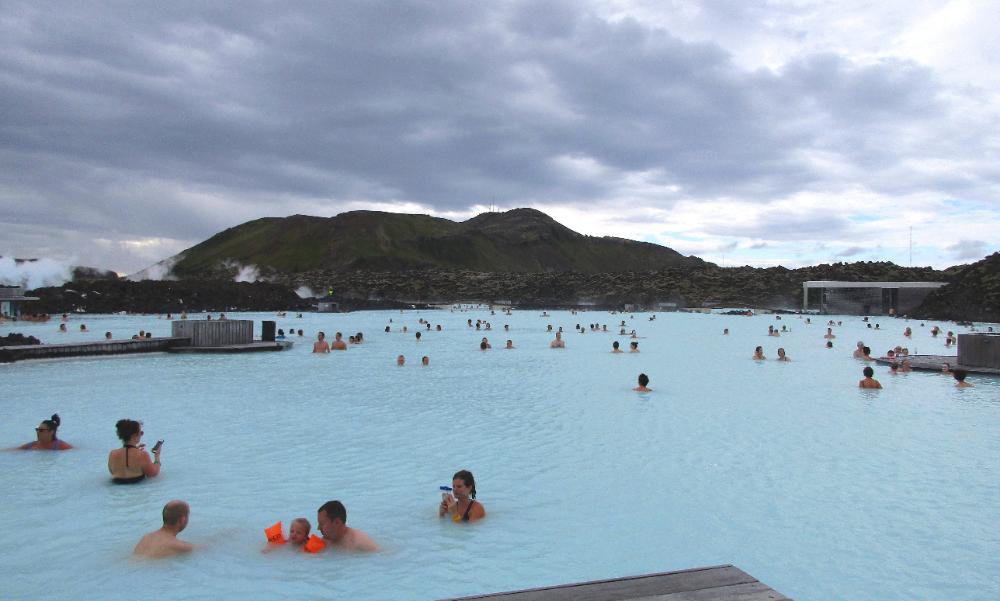
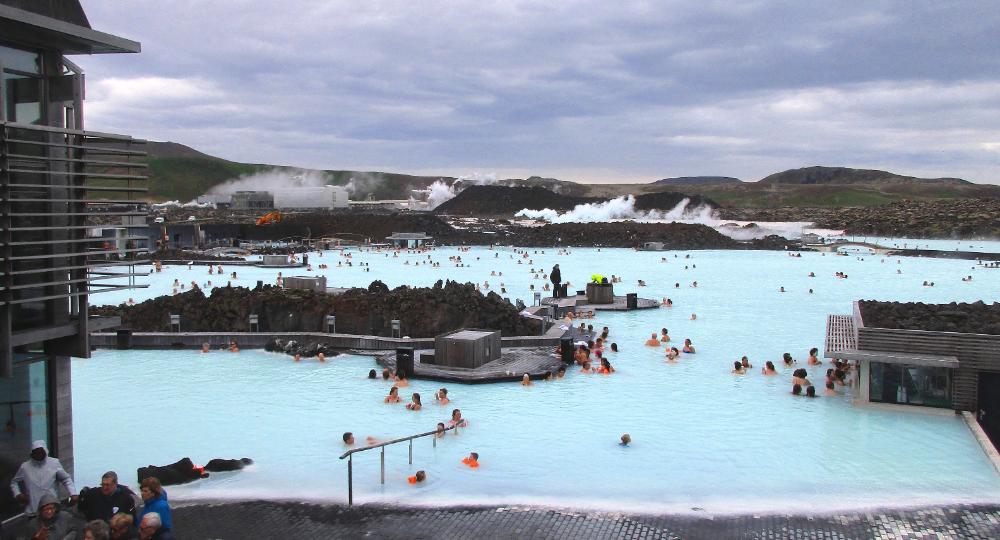
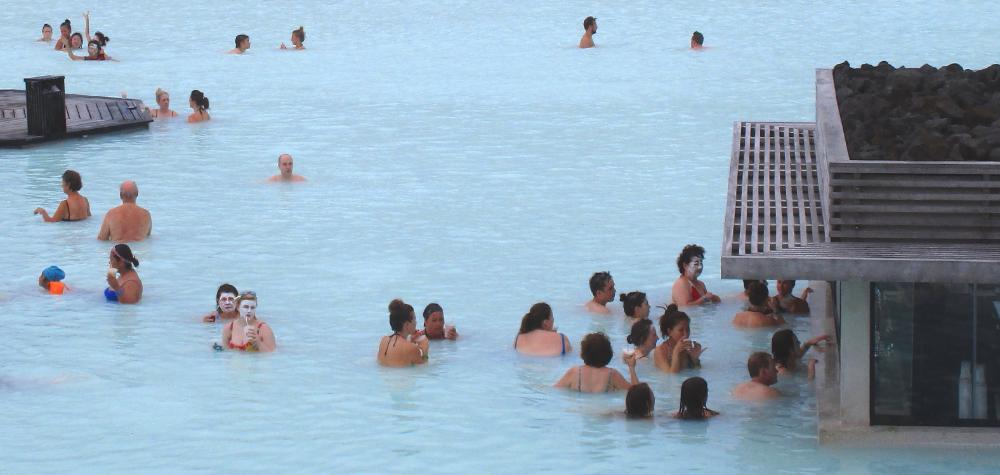
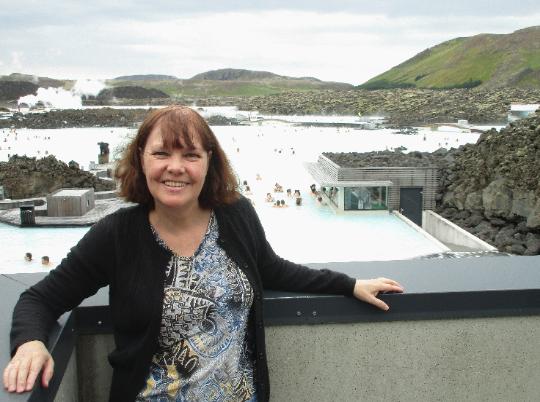
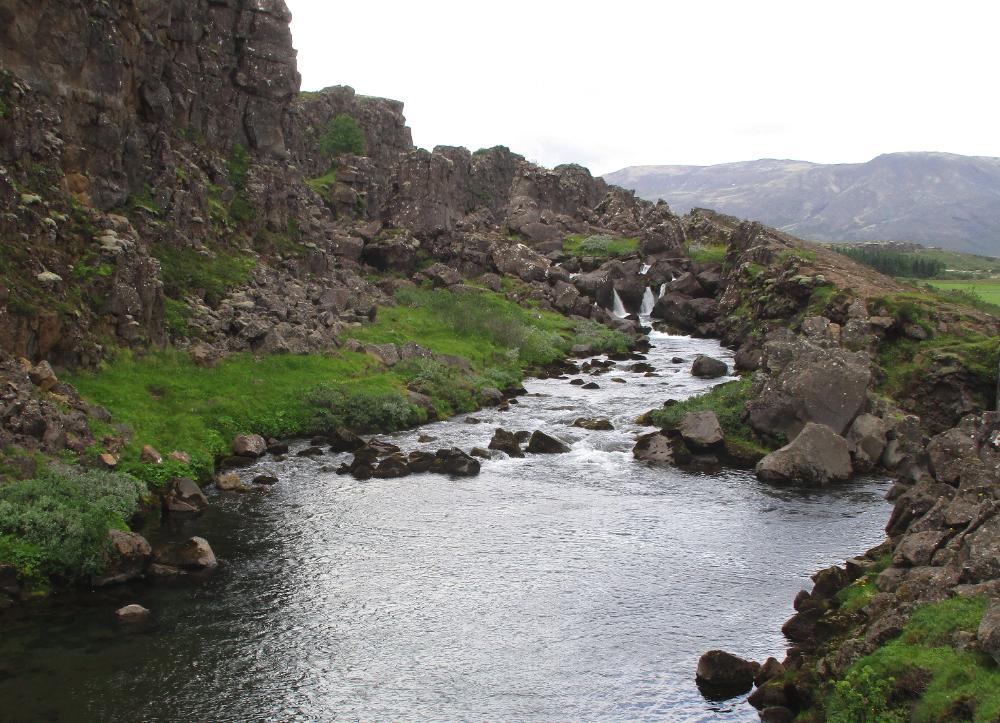
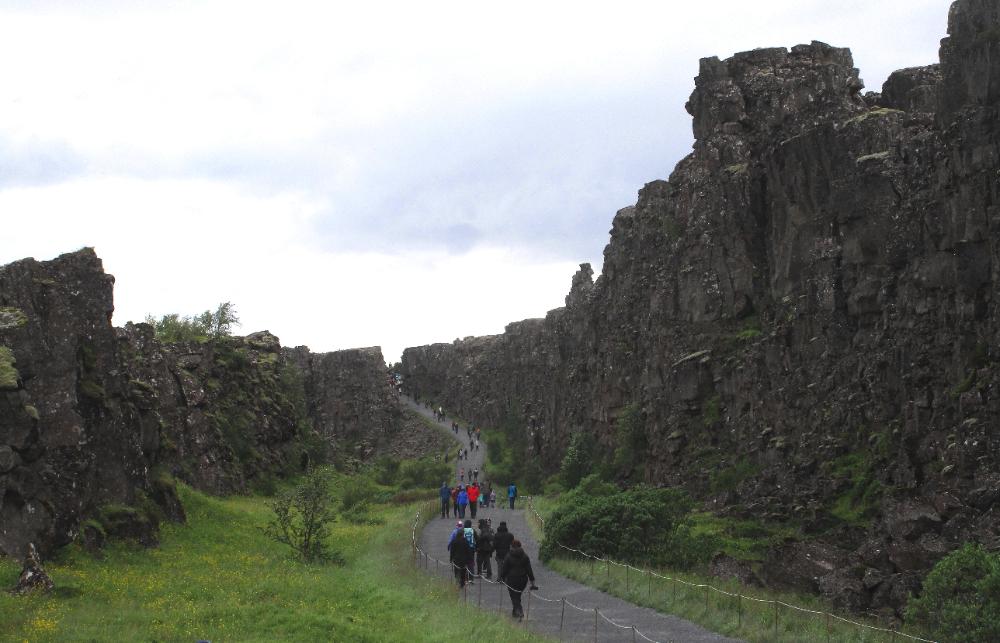
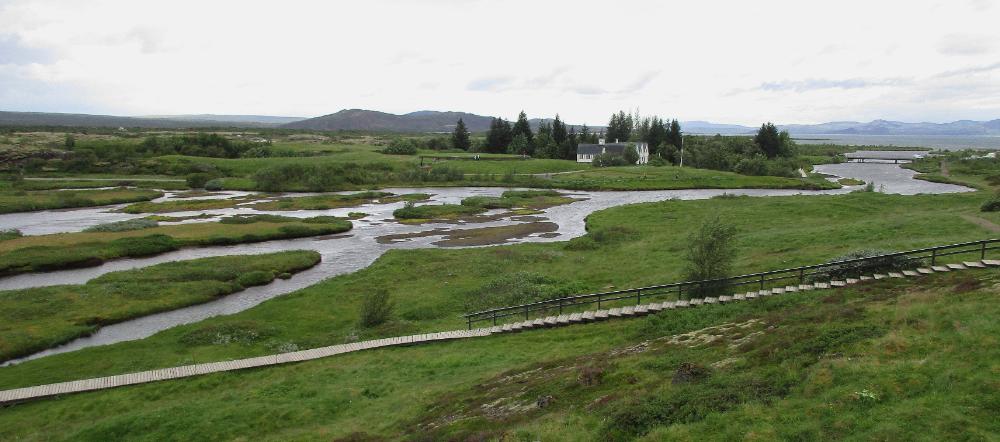
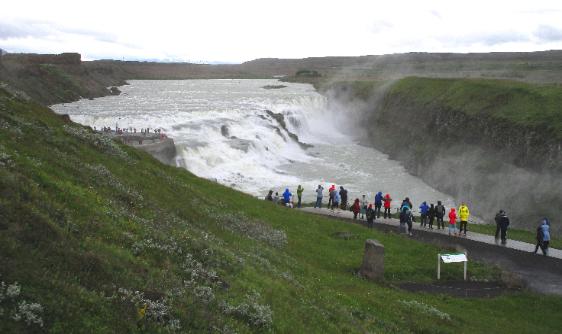
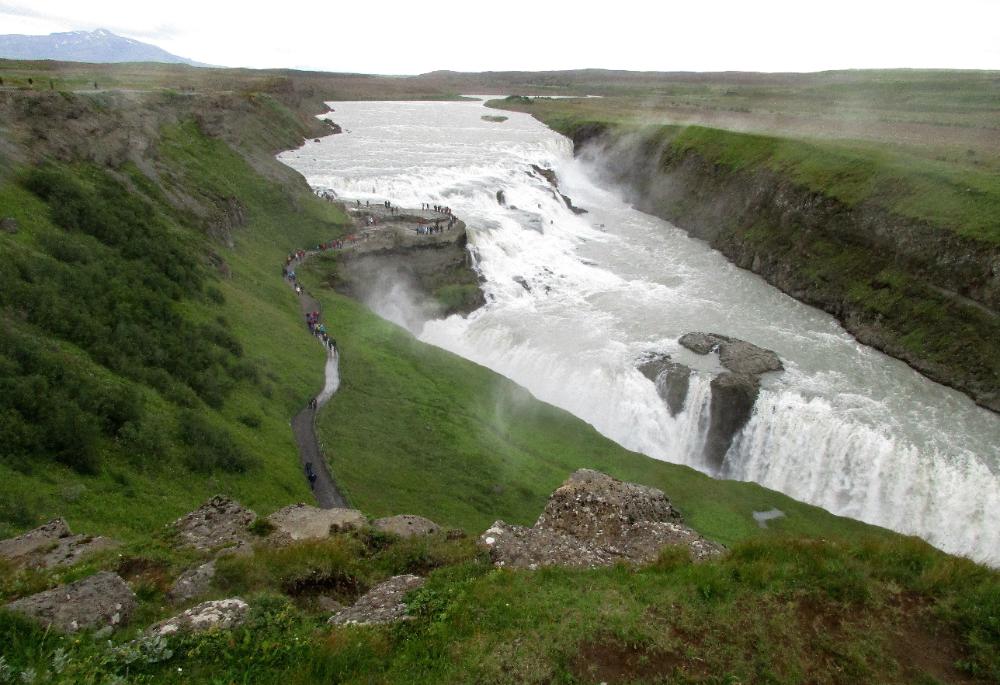
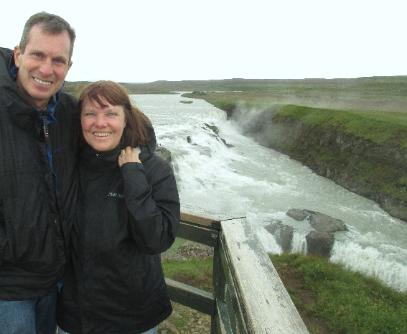
| We spent 3 hours in the Blue Lagoon's silky-soft waters until our fingers turned to prunes. We're glad we didn't let the high price tag stop us from visiting this one-of-a-kind place. |
| Blue Lagoon & Golden Circle, Iceland |
| This in-flight article made us realize Iceland might actually live up to its name this summer! Our first day really was ice-cold and blustery -- but the rest of our trip was much nicer. Overall we'd recommend visiting Iceland in August -- peak season but for a reason. |
| We arrived on a red-eye flight at 4:30 am local time, picked up our car rental, and drove straight to the Blue Lagoon at 7 am. You can see Robin all bundled up to the left. The picture to the right was taken later in the trip when the weather was warmer. |
| We shivered madly getting from the changing rooms into the water, but once we found the super-hot pockets of water in the lagoon we were much happier |
| The Blue Lagoon is big and takes time to explore. Don't miss the hot waterfall and rock-walled steam cave. The hottest water emanates from those squarish buildings with the circular decking. Interestingly this is not a natural attraction but a manmade one: the lagoon is fed by the water output of a nearby geothermal power plant. |
| Your $94 admission includes a dollop of white mud that you get to slather on your face. It's supposed to be good for your skin. You can see several people in this photo with white mud masks sipping drinks from the bar (one drink is also included with your admission). You're supposed to leave the mud in place for ten minutes or so until it starts to crack. |
| We didn't want to risk our camera during our time in the lagoon so unfortunately you'll miss seeing us with white mud on our faces! There's a nice overlook (free to all visitors) on the second floor above the cafeteria where you can get good Blue Lagoon photos. |
| This isn't your typical historical site as there are only a few placards to read. The farmers who met here didn't build any permanent structures, but the site nevertheless represents one of the oldest parliaments in the world. |
| Thingvellir is where Iceland's "parliament of farmers" met -- as far back as 930 AD! It's situated in a dramatic rift valley where you can literally walk between the two tectonic plates separating Europe from America. According to the Guide to Iceland, "Iceland is the only place in the world where this [Midatlantic] rift is above sea-level, and nowhere can you see the edges of both plates as clearly as in Thingvellir." |
| Across the braided river at Thingvellir you can see a quaint church dating from 1859. That's old by Icelandic standards. Even Reykjavik was barely urbanized until the 1900's. |
| Fierce winds sent the spray from Gulfoss streaming across the river. Like nearly all natural sites in Iceland, it's free to visit Gulfoss -- so the natural beauty is free (for now) even if the rest of Iceland isn't. |
| The last notable stop along the Golden Circle is Gulfoss (foss means waterfall). It isn't the largest waterfall in Iceland but it gives a good idea of the many dramatic waterfalls that dot this landscape. |
| A bit further down the road is Geysir, the first geyser known to modern Europeans. The one erupting above isn't Geysir itself (which is rarely active) but rather Strokkur about 160 feet to the south. |
| By the time we reached Heidi Cabin ($153 per night) we were exhausted -- the after-effects of a sleepless red-eye flight. With its king bed, private bath, kitchenette, and wifi in a good location, this was a steal by Icelandic standards. We rented a lot of Airbnb lodgings during this trip since hotels were so expensive. |
| First an overview: We hit the ground running on this trip and never stopped until we left Iceland 15 days later. We started with an 8-day car rental and a counterclockwise drive around Iceland's Ring Road. We followed up with several remarkable days of hiking and hut stays at two of Iceland's premier nature reserves, Thorsmork and Landmannalaugar. |
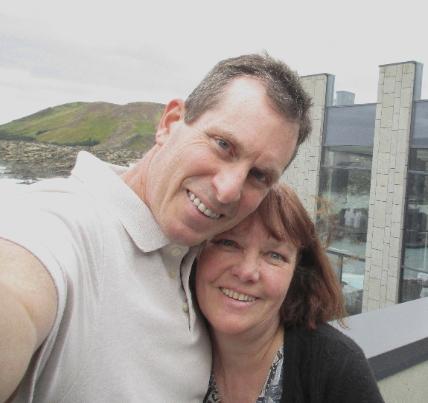
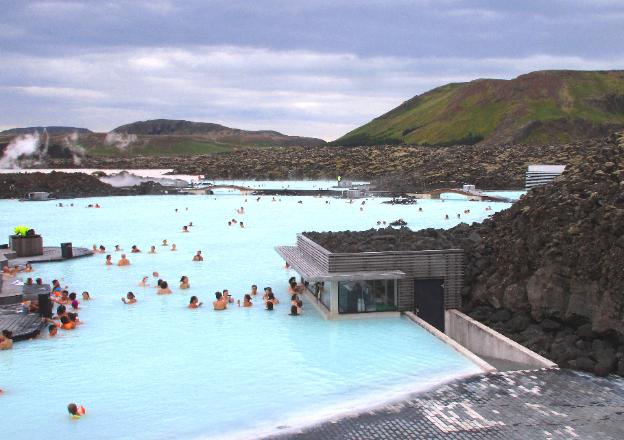
We packed a whole lot into our two-week trip to
Iceland, and now that we're on the far side of it,
we have to say it's deserving of all the rave
reviews it gets. This small country is home to
some stunning scenery that's unlike anything
else we've seen -- especially Landmannalaugar.
The best thing we did was set aside time for
hiking in Thorsmork and Landmannalaugar. But
we wouldn't have missed our 8-day Ring Road
adventure either, so we suggest you do what
we did and spend two full weeks here instead
of the two or three days most people give it.
We started our trip off with a bang with a visit
to Iceland's most popular attraction: the Blue
Lagoon. It's also one of Iceland's priciest at $94
per person, but we're glad we did it anyway
because it's such a quintessential Iceland thing
to do. Where else can you find water this milky
blue in such a wild volcanic setting? Locating
the hottest pockets of water in the huge lagoon
was our favorite thing on such a frigid morning.
We spent the rest of our first day driving the
Golden Circle, an easy loop trip near Reykjavik
with three big attractions: Thingvellir, Geysir,
and Gulfoss. More on each of these below.
Iceland, and now that we're on the far side of it,
we have to say it's deserving of all the rave
reviews it gets. This small country is home to
some stunning scenery that's unlike anything
else we've seen -- especially Landmannalaugar.
The best thing we did was set aside time for
hiking in Thorsmork and Landmannalaugar. But
we wouldn't have missed our 8-day Ring Road
adventure either, so we suggest you do what
we did and spend two full weeks here instead
of the two or three days most people give it.
We started our trip off with a bang with a visit
to Iceland's most popular attraction: the Blue
Lagoon. It's also one of Iceland's priciest at $94
per person, but we're glad we did it anyway
because it's such a quintessential Iceland thing
to do. Where else can you find water this milky
blue in such a wild volcanic setting? Locating
the hottest pockets of water in the huge lagoon
was our favorite thing on such a frigid morning.
We spent the rest of our first day driving the
Golden Circle, an easy loop trip near Reykjavik
with three big attractions: Thingvellir, Geysir,
and Gulfoss. More on each of these below.
2018
| After buying groceries for our trip, we drove past Reykjavik to Thingvellir along the Golden Circle route (which loops back to Reykjavik but we didn't do that part). The Golden Circle is especially popular because it's so close to Reykjavik and can easily be done as a day trip. |
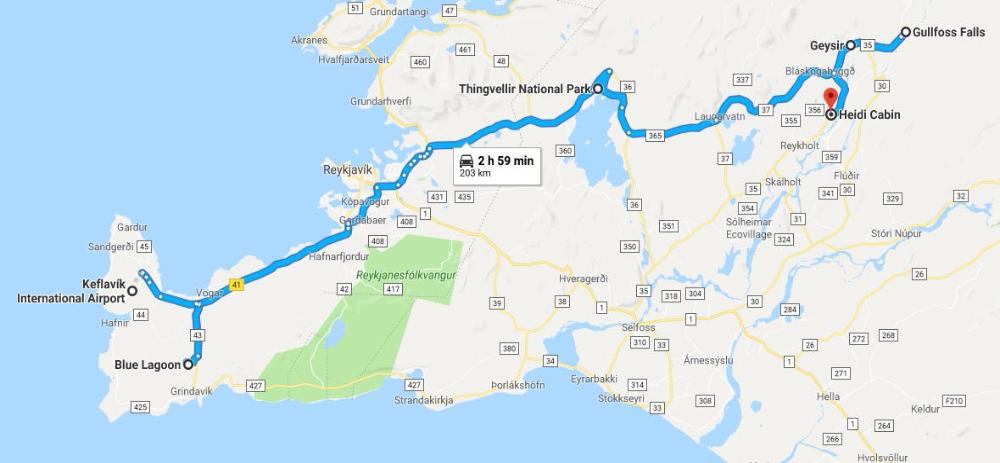
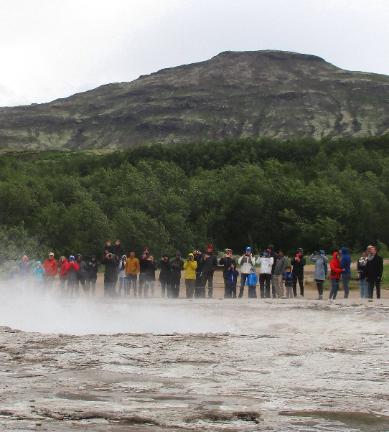
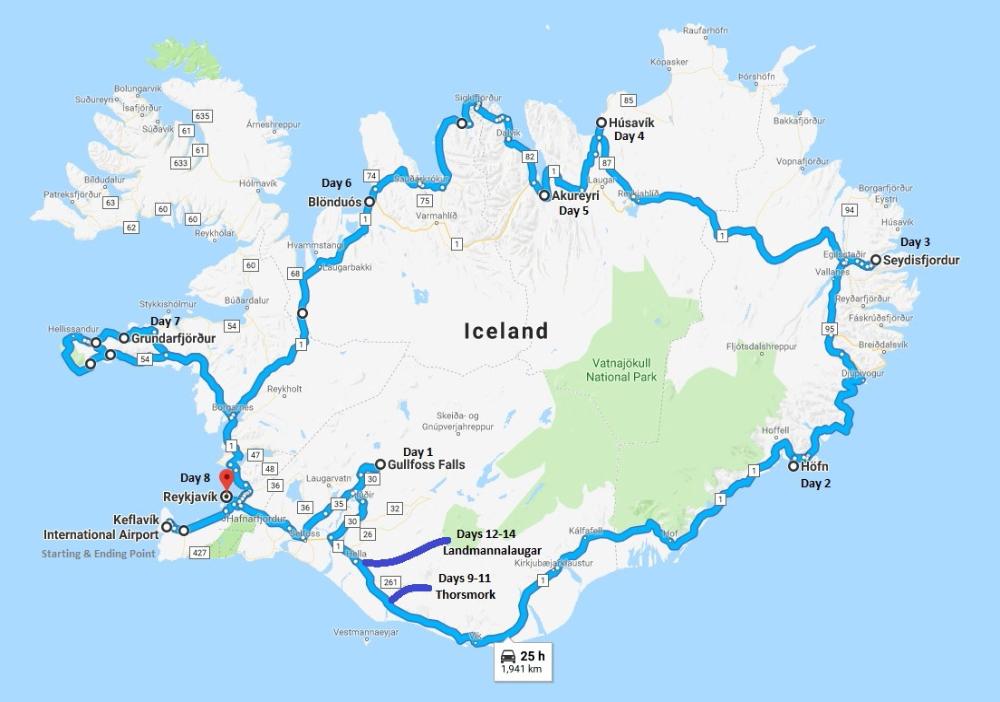
| Map data ©2018 Google |
| Map data ©2018 Google |